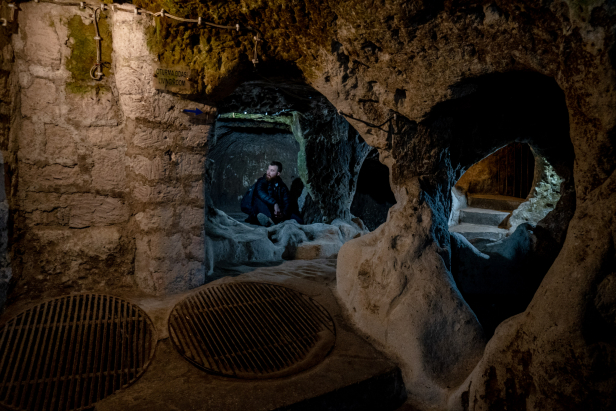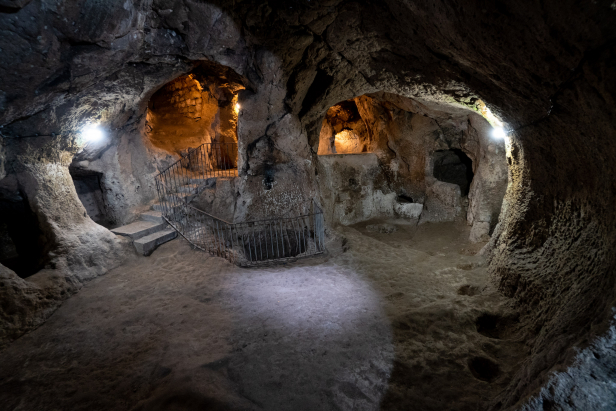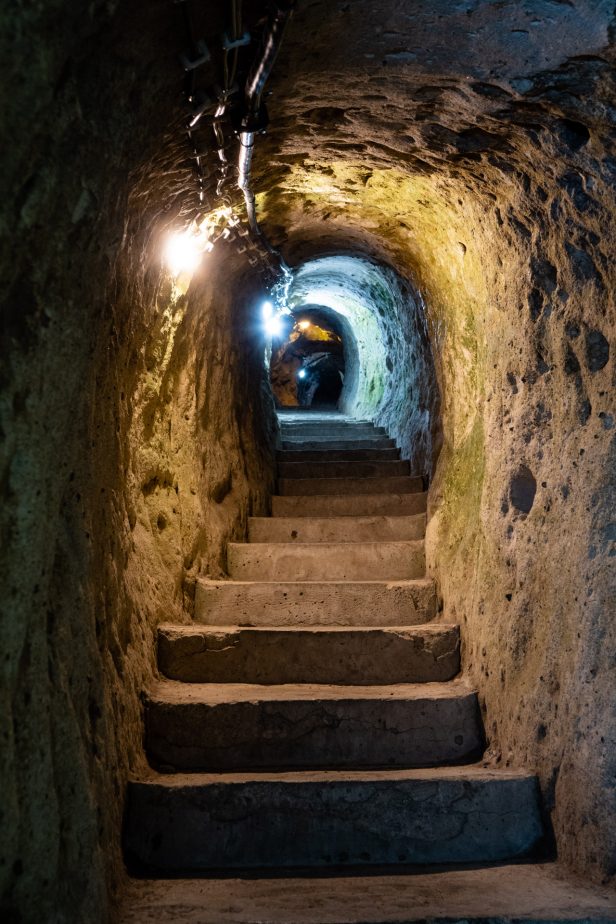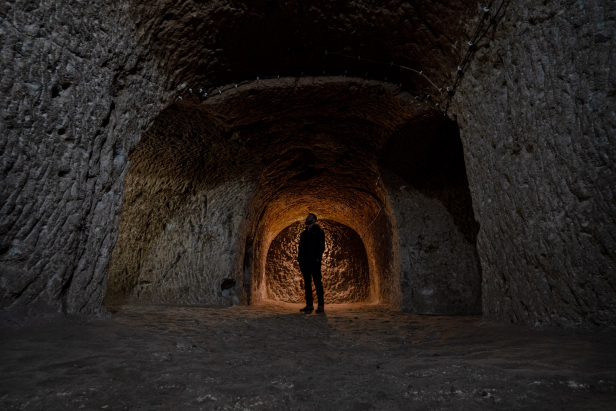Derinkuyu Underground City
Derinkuyu Yeraltı Şehri
/ By Josh
Cost: 60TL
(for Underground city only, Müze Card accepted)
Great for: Suburban Spelunking, Cave Cities, Troglodytes, Byzantine History
Away from the sheltered valleys and towering fairy chimneys that dominate other parts of Cappadocia, the inhabitants of Derinkuyu took another approach to finding shelter from the cold winter and enemy raids. The people of Derinkuyu, known as Malakopea to its native Greek inhabitants, carved straight down into the stone, building a hidden city in the plain.
The distant history of the city isn’t well known. It is thought that the upper galleries of the cave city were first built by the Hittites who lived in the region in the Bronze and into the early Iron Age. In the fourth century BC Xenophon wrote of the people of this region and their cities carved into the stone though the settlement at Derinkuyu is not mentioned specifically.
Over the centuries the upper galleries, which were used as stables and storerooms were expanded until it grew into a city 85 meters below the surface, the deepest of Cappadocia’s over 200 underground cities. The city was built complete with tunnels, gates, wineries, and churches with airshafts and wells carved to supply the city with fresh air and drinking water. While some of the wells were open to the surface, others were only accessible from within the city itself to keep the water supply from being poisoned.
The underground city at Derinkuyu was used for defence during the Ummayad and Abbasid expansion (750-1150) and again when the Seljuks and Mongols expanded their power into the region. The last known use of the underground city for defence was in 1909 when news of unrest and massacres in Adana reached the people of Cappadocia.
Subscribe to The Art of Wayfaring
Known as Malakopea until recent history, Derinkuyu, meaning “Deep Well” in Turkish was the name given to the town in 1923 when the Greek population left and were replaced by Turkish settlers following the collapse of the Ottoman Empire and the founding of the Turkish Republic.
While Derinkuyu’s greatest claim to fame is its below-ground city, the town is also home to a beautiful 19th century Greek Orthodox church, whose fine masonry stands in stark contrast to the tumble-down buildings that surround it. Known as Üzümlü Kilise, or “Grape Church” in Turkish (the actual name of the church is St. Theodorus Trion) its name comes from the grape vines and clusters that surround the entrances to the church. The Church was built as a three-aisled cruciform, and despite holding service once a year in May, is usually closed to visitors.
How To Get There
Car
Derinkuyu sits between the cities of Nevşehir and Niğde on the aptly named Nevşehir-Niğde highway (D765). The town of Derinkuyu is small and finding the entrance to the underground city is fairly easy despite some misleading signs likely erected by shop owners looking to create a little extra traffic.
For more about car rental and driving in Turkey make sure to read our full drivers guide.
Public Transit
As the Underground City of Derinkuyu is along the Nevşehir-Niğde highway there is public transport in the area. Another option is to visit one of the many tour agencies in any of the touristic towns of Cappadocia and arrange to join a tour bus or book a private driver.
Where To Stay
If you’re visiting Derinkuyu, then chances are you’re here to experience the hot air balloons, fairy chimneys, and rock-cut cities of Cappadocia. Your best option for finding a hotel is to stay near Göreme National Park in the villages of Ürgüp, Çavuşin, Ortahisar, Üçhisar, or Göreme where you’ll find everything from hostels to large modern hotels. Better yet, stay in one of the many dozens of boutique or cave hotels in Cappadocia’s picturesque stone villages.
Other Tips
Planning on visiting Derinkuyu? Make sure to check out the other great sights of Cappadocia and Central Turkey!
Subscribe to The Art of Wayfaring
Have any tips or info to add? Spot any mistakes? We’d love to hear about it.




